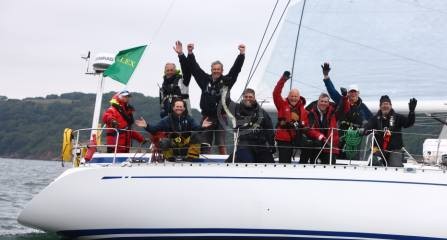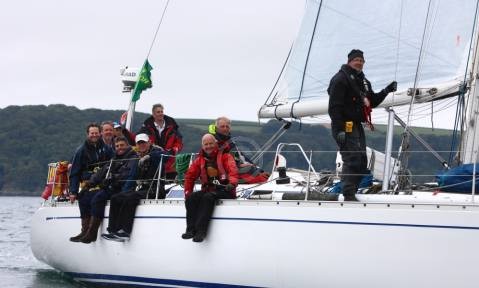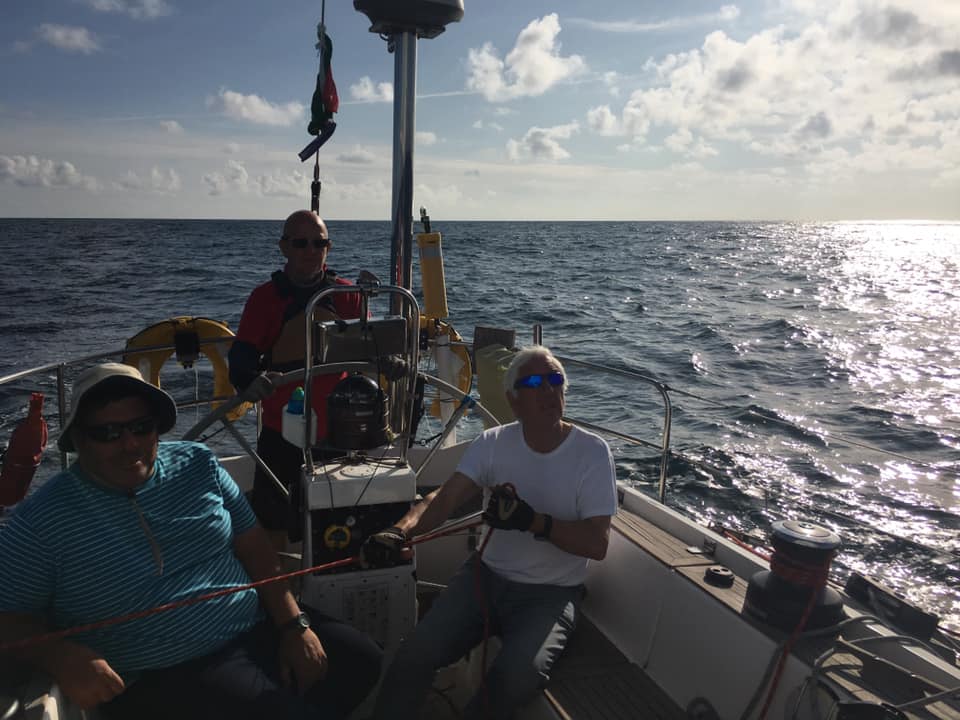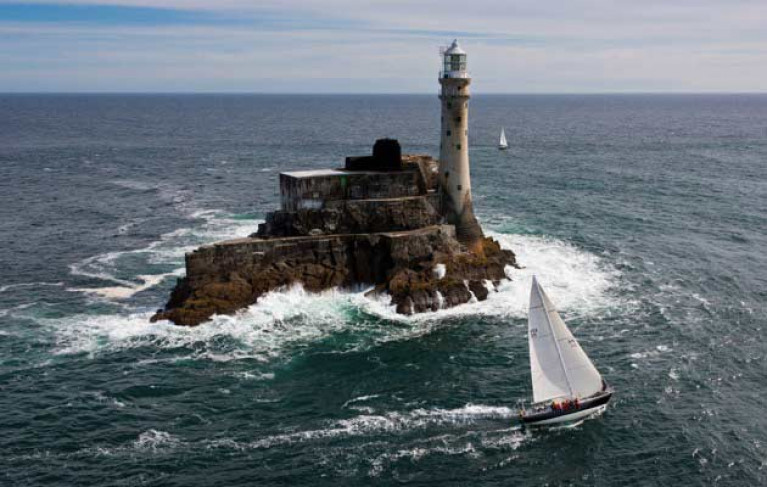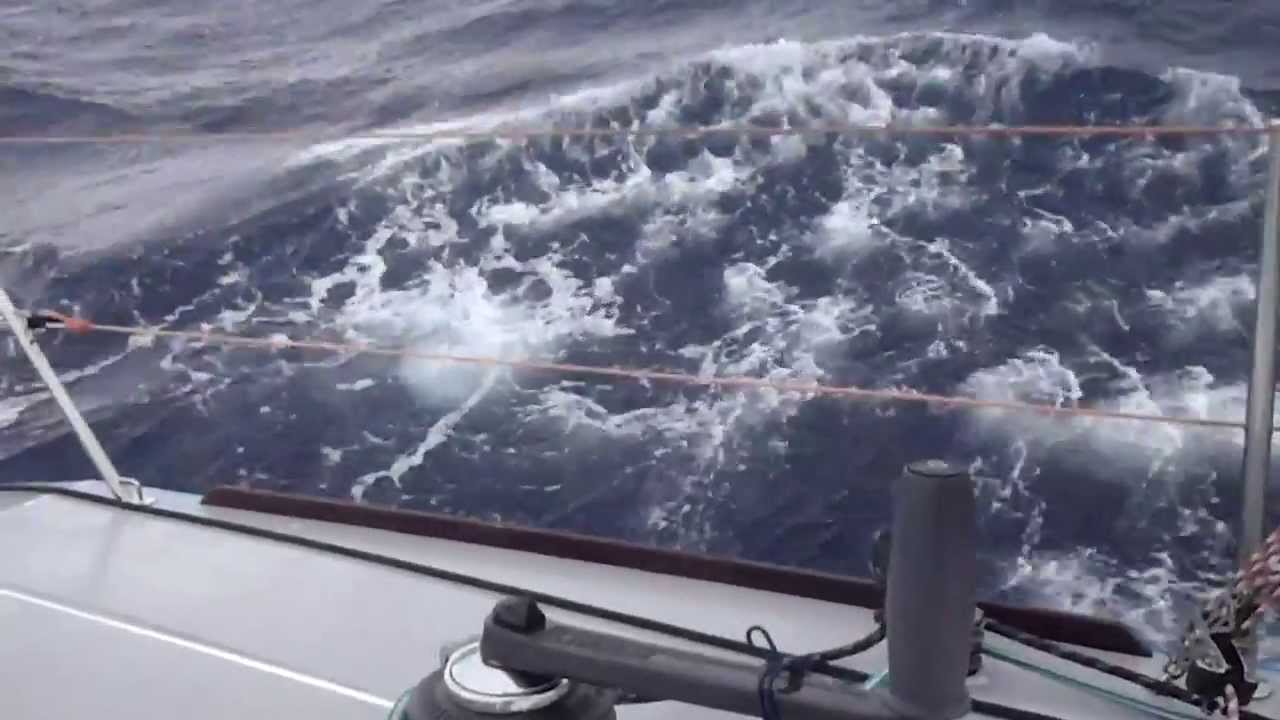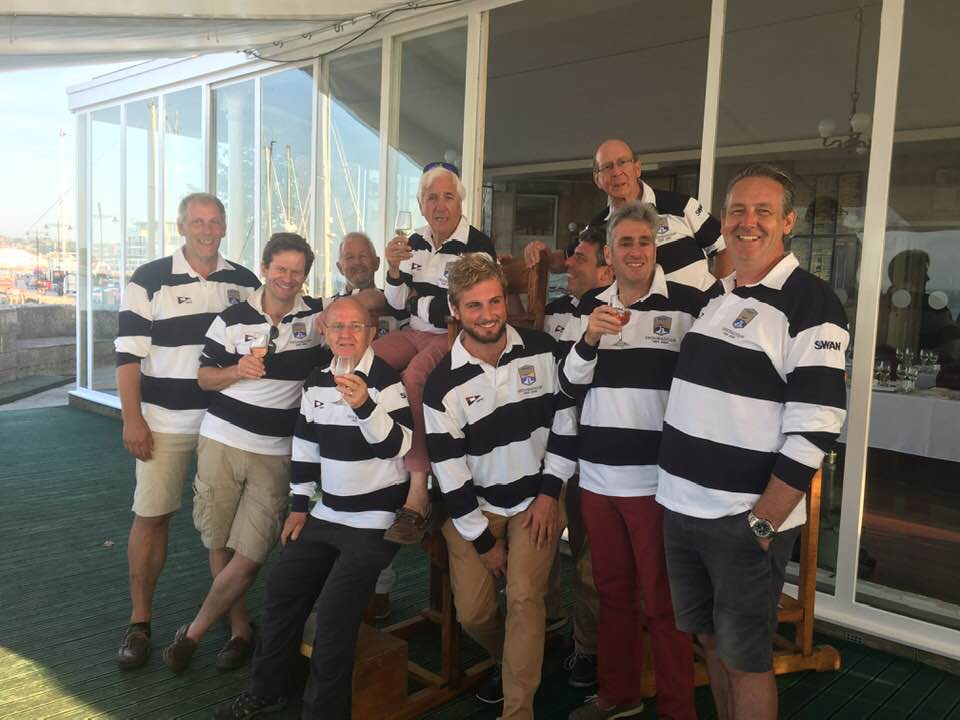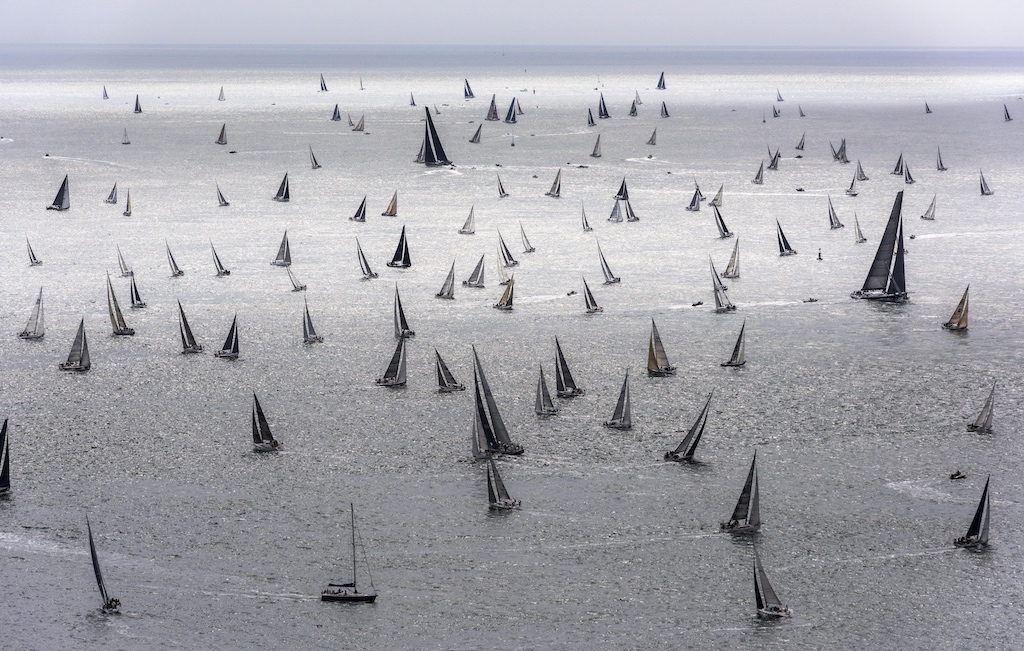The interesting thing about the Rolex Fastnet Race is that for an offshore race there are a lot of inshore tactics to consider. Coupled with the start of the race being very intense due to its location and sheer number of boats, this makes it a great spectacle to watch from the shore.
To get the most out of your race, as with all offshore races, there is a significant amount of pre-race navigation and tactical work you can do that will identify the key decision points and help make decision making easier on the course. The four main areas to work on before the race are:
• Tide
• Land influences
• Weather information
• Decision points
Tide versus wind
The Fastnet course covers an area where tidal currents are very significant at different points and often the question is when does the tidal advantage take priority over a shift or pressure gain? There is often not one answer to that question, but good preparation for those moments can be vital in helping you choose how to make your decision.
One of the first things to do is to examine the tidal situation on its own, without considering any wind effects, and identify the potential key tidal points, particularly where you’d like to be on your ideal course to maximise tidal gain or minimise the loss of an adverse tide. From this you’ll establish points on the course where you know you do not want to be under any circumstances, regardless of the wind conditions. As a minimum I’d go through this process for the following locations:
• The Solent: everyone should have a high-resolution tidal atlas of this area. Yes, the Fastnet race starts with favourable tide but the Solent has significant tidal differences across it that are key to your positioning, and can give you some great early gains – as well as a psychological advantage by busting out of the Solent in front of your rivals.
• St Alban’s Head: the overfalls here create a tough sea state but also significant tidal gains/losses to be aware of.
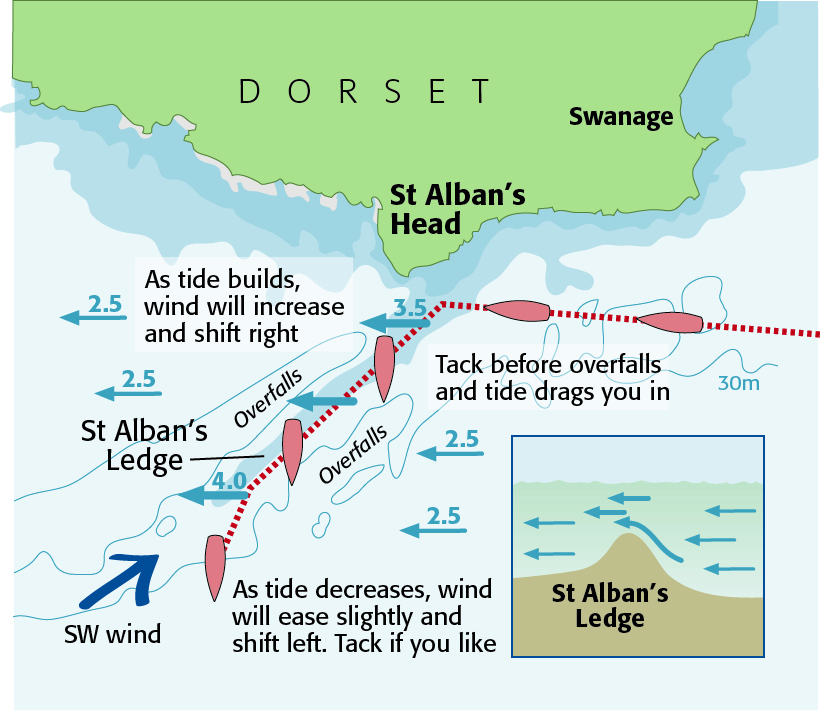
Portland Bill: the decision whether to go inside or outside needs to be made significantly before you get there, so understanding your timing windows is key. You need to be able to mentally walk back through the race course to make the decision early enough.
• Start Point: again, overfalls can create a difficult sea state as well as setting up tidal gains/losses to be made.
• Lizard Point: this point often proves critical, and even more so on the final approach to Plymouth. It’s renowned for developing quite a change of sea state, which can influence what manoeuvres and sail changes you choose.
• Land’s End: there is often a split created by the Traffic Separation Scheme (TSS), depending on the timing of tide.
• Isles of Scilly: especially on the return leg you need to do some tidal prep to help decide how you might weave around the TSS, and especially how to pick your laylines.
• Fastnet Rock: the key thing here is to identify whether you will turn the corner sharply, coming inside the smaller rock to the north, and if so to understand your track. There is a 0.1-mile gap that has enough depth at all points of tide at 11.6m.
If you are running navigational routing software a very visual way to see this is to run a route with a fixed wind direction and speed – I would use a course average of a south-westerly breeze of 240° SW at 14 knots.
Running this from several different start times to cover the tidal period will very quickly show you the key tidal gates, influences and the time-critical aspect of them. If you have time on your hands it would be worthwhile to also run the routing for a series of different wind directions as well, even if typically the race is referred to as upwind to the rock and downwind home!
Iconic Fastnet headlands that can make or break your race – and how to round them
There are three major headlands on the Rolex Fastnet Race route that are key to the success or otherwise of your…
Land influences
Due to the significant gains or loss that can be made from utilising the tide in the race you’ll often find yourself very close to land. Inshore tactics dominate the first one to four hours of this race as you leave the Solent. Being able to step up the intensity and make slick manoeuvres on the approaches to the key Fastnet headlands will give you an opportunity to make significant gains.
The majority of the tidal gates are also headlands so there is always an additional opportunity to make gains by using wind bends and wind shadows as you approach.
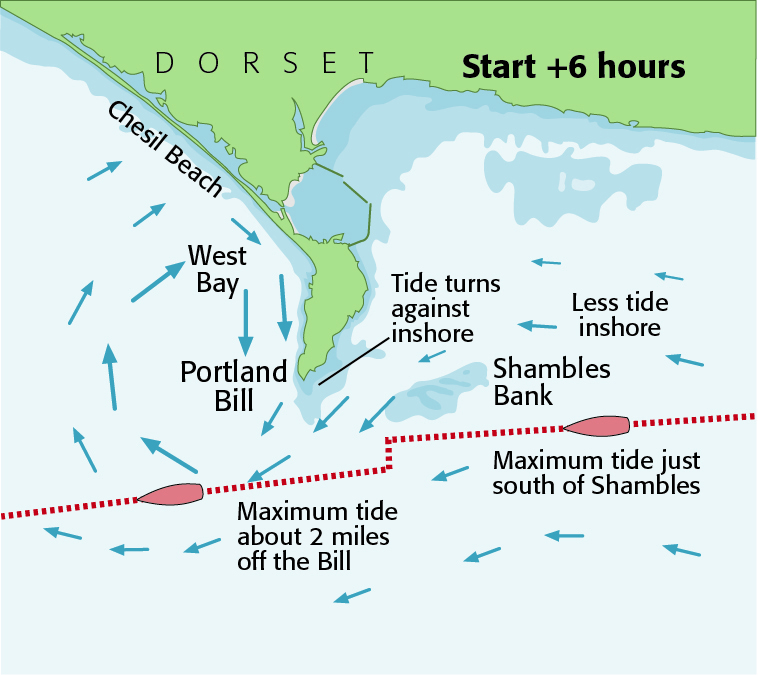
The bigger boats often arrive at Portland Bill in ebb tide with a back eddy forming in West Bay, so it pays to be just outside Shambles Bank
Again, I would take some time to assess the following headlands and think about how the wind will bend around them, where the land effects will cause acceleration and where there may well be wind shadows: Durlston Head; St Alban’s Head; Portland Bill; Start Point; Lizard Point; Land’s End.
Wind will generally prefer to go around, rather than over, land. Especially where the land is steep and high, you can get very pronounced wind bends that can create some good opportunities to make a gain by being inside the shift.
The goal is to approach just below the point where the land is at its widest relative to the wind direction, as that is where the most significant wind bend will occur. It will also be a bigger shift closer to the land, so you always have to dig in – and often do more than one manoeuvre as you sail into it.
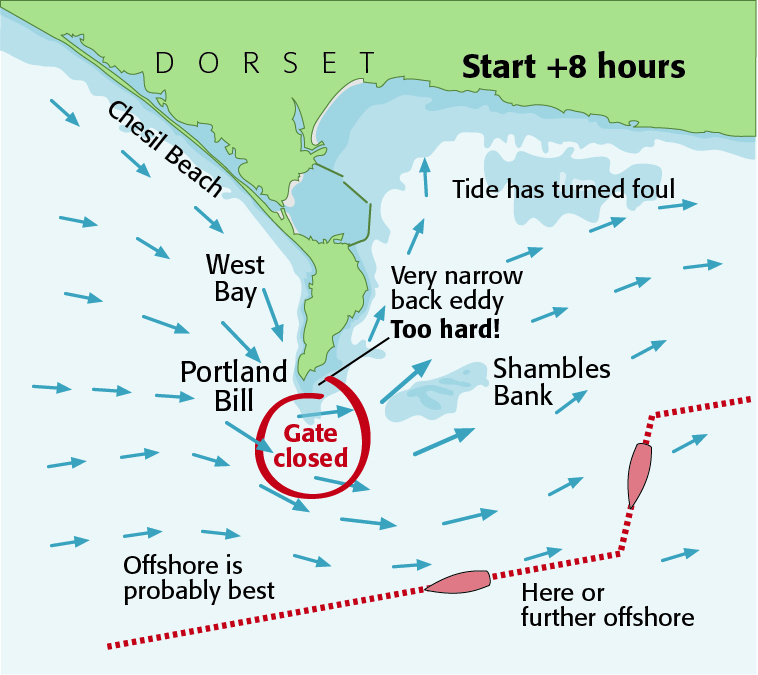
Two hours later the tidal gate has closed so it pays to get offshore. Up to three miles offshore there will be 3-5 knots of tide against you
Weather information
Identify where you can get good real-time information from, and remember to always keep one eye on reality and check it against the forecast.
Take time to read the forecast service providers’ websites to learn more about your weather data, particularly the temporal and spatial resolution. Many software programs will happily interpolate between data points in both time and space, falsely leading you to believe there is more detailed information available than there actually is.
Set up a schedule of when you are able to get new weather data, and at what times the data you will be using is updated. Also, it’s easy to forget to download before leaving a shoreline if you are using a mobile data connection – the obvious spots where you are going to lose connectivity is going across Lyme Bay, leaving Land’s End and leaving the Fastnet Rock.
As soon as you start pressing offshore, antennae-dependant mobile signal will be quick to fade. Network coverage is less extensive generally as you head further south-west along the coast.
Start Point
Key decision points
From the preparation work you have done you should be able to identify where the key decisions you will need to be make are, and will have information available to make those decisions. These will be periods of increased intensity for all the crew, so you need to be confident in how you are going to take those decisions and when you need to start actioning them – which could be a couple of hours before.
Using a checklist can help keep you on track:
• What is the decision? For example, on the approach to Portland Bill where should we be positioned relative to the tidal situation?
• What is our action? What manoeuvres do we need to make – what sail changes, what are our timings, is the crew ready?
• Have we got all the information? What is wind strength at Portland, for example, what is the tidal window in which we need to be making our approach, where is the rest of our fleet, and what can the boats in front tell us (from the tracker)?
• How confident are we? If we are slower or faster by an hour what would be the potential outcome? If the wind direction changes what would it need to be to change our positional decision?
• When is the next key decision and when do we need to think about it?
David – http://markethive.com/david-ogden
